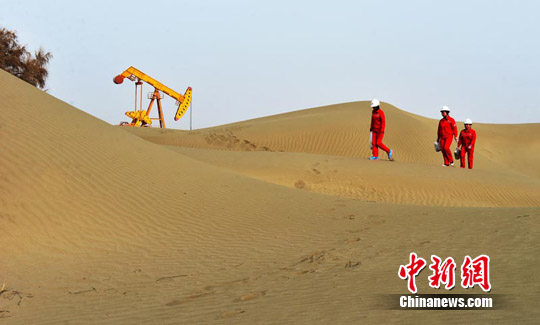
File photo of Taklimakan Desert.
China's largest sand sea, the Taklimakan Desert, may have formed about 25 million years ago, much earlier than previously thought, a study led by Chinese researchers suggested Monday.
The Taklimakan Desert, located in China's northwestern Xinjiang Uygur Autonomous Region, is also the second largest shifting-sand desert in the world, just after Sahara Desert in Africa.
Its age, however, remains controversial, with the dominant view being from 3.4 million years old to 7 million years old, said lead author Zheng Hongbo, professor at the School of Geography Science of Nanjing Normal University.
In the new study, Zheng and his colleagues identified volcanic ash from two sedimentary sections along the southwestern margin of the Tarim Basin, which preserves the evidence of desertification in the region's geological past.
The ash includes minerals such as sanidine, aegirineaugite, and biotite, which are ideal for precise geological dating, Zheng said.
This work, combined with field investigations and petrologic studies, showed that the Taklimakan Desert likely came into existence 25 million years ago.
Zheng suggested that the formation of the desert was the result of "widespread regional aridification and increased erosion in the surrounding mountain fronts, both of which are closely linked to the tectonic uplift of the Tibetan - Pamir Plateau and Tian Shan."
He noted that the desertification of the Asian interior has had far-reaching impacts on regional and even global scales.
That's because dust from the Taklimakan Desert "contributes substantially to the global aerosol system, allowing it to play a significant role in modulating global climate," Zheng added.
The findings were published in the U.S. journal Proceedings of the National Academy of Sciences.
















































